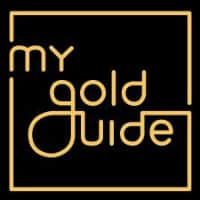In App


Factors such as inflation, stock market volatilities, movement of the US dollar, variation in demand and supply of gold and other global geopolitical factors cause gold price fluctuations.
The price you see on different websites features the prevailing gold rate that is as per the local association price. And for organised jewellers, this is same as the one mentioned in their retail store. However, in some smaller jewellery stores, the price mentioned could be higher than the gold rate mentioned in the websites due to the addition of transportation costs or jeweller's premium for the same purity level.
Some jewellers add a premium for purity and brand. So, if you are being charged a higher amount, be sure to ascertain the purity of the gold ornament before you pay. Further, if you travel to some small semi-urban/rural city, you may find that the jewellers also quote the price of 22k with GST and non-GST.
Visit MyGoldGuide's price page to know the price of gold per gram for 22 and 24 karat gold. You can also check the current gold rates on business news channels, in the market tracker section of newspapers or on verified apps such as Kcast Gold Live or Gold Price Live. Organised retailers also publish daily gold rates on their website apart from association websites such as http://www.ibja.co/ .
The actual gold price is defined per gram or per 10 gram by exchanges for respective purity levels. This is the amount you pay for the weight of the gold you are buying. Making and wastage charges are calculated separately for every piece of jewellery. Making charges usually range from 3-25% of the gold price for mass machine-made jewellery. Wastage charges range anywhere between 5-7% of the amount of gold. However, most jewellers show only the making charges on the invoice, and it is inclusive of the wastage charges.
Yes, making charges could be different for different designs and shops. This is something you need to ask the jeweller you are buying from. They usually range from 3-25% depending on whether it is mass-machine made jewellery or intricate handmade jewellery. The price is higher for hand-made jewellery. For example, the making charges for machine-made chains can be as low as 3% while it's much higher for temple collection jewellery.
Gold buy-back policy is different for each jeweller. This is something you must confirm with your jeweller before making the purchase.
LBMA stands for London Bullion Market Association. A global authority for precious metals, LBMA is an over-the-counter market for trading gold. Trade is conducted between members of LBMA (most of which are major international banks or bullion dealers and refiners) and is overseen by the Bank of England.
You can sell your old gold jewellery without any constraints on the time period. However, you must check with the retailer about repurchase of old gold both for cash and exchange.
There is no limit (provided you can prove the source of income and produce purchase receipts). Incase you do not have proof’s then in case of tax raid the limit for gold ownership for unmarried women is restricted to 250 grams, for married women it is 500 grams and for men, it is 100 grams.
My Gold Guide is an online platform developed by World Gold Council to spread awareness and education about gold. As an investor and gold buyer, there are a number of questions that arise when you start to think about investing in gold. My Gold Guide has been developed to answer all those queries and guide you in making those gold investment decisions starting from gold prices, details about gold products, how to invest, hallmarking and much more.
